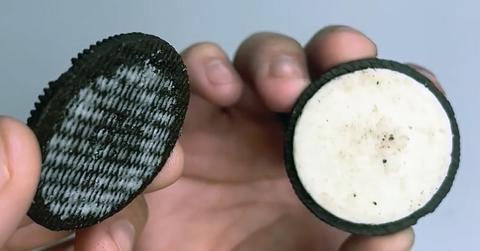MIT scientists reveal shocking results in Oreo creme distribution study
By Greg SullivanJun. 6 2024, Published 8:01 p.m. ET
The iconic Oreo cookie has sparked a new scientific inquiry: can its creme filling be evenly split between its two wafers? In a groundbreaking study published by the American Institute of Physics, MIT researchers have delved into this delicious dilemma, creating a specialized field they call "Oreology."
In April 2022, a team of MIT scientists, including Ph.D. candidate Crystal Owens, embarked on a mission to uncover the secrets of Oreo creme distribution. Owens explained to VICE that her curiosity was piqued by a childhood challenge: "I was personally motivated by a desire to solve a challenge that had puzzled me as a child: how to open an Oreo and get creme evenly arranged on both wafers?" Owens shared. "I preferred the taste of the cookies with the creme exposed. If I got a bite of wafer alone it was too dry for me, and if I dunked it in milk the wafer would fall apart too fast."
Owens' expertise in mechanical engineering and her experience with a laboratory rheometer—a device that measures fluid viscosity by twisting—proved invaluable. Initially used to test a carbon nanotube-based ink, the rheometer's twisting mechanism inspired Owens to tackle the Oreo mystery. Together with her colleagues, she designed an "Oreometer," a 3D-printed tool specifically for twisting Oreos.
After twisting the cookies apart, the researchers meticulously recorded the creme distribution on each wafer. They experimented with various conditions, including dunking the Oreos in milk, adjusting the twisting speed, and testing different flavors. Despite their comprehensive approach, they found no reliable method to achieve an even split. The results validated what I saw as a child—we found no trick for opening up our Oreos," Owens said. "In essentially all possible twisting configurations, the creme tends to delaminate from one wafer, resulting in one nearly bare wafer and one with almost all the creme."
Interestingly, when the creme did split between both wafers, it often formed a "half-moon" shape rather than an even layer. Owens was surprised by these findings, having believed that a perfect twist would lead to a perfect split. She also discovered that Oreo's "creme" is more akin to frosting than traditional cream.
Oreo's marketing has long challenged fans to master the perfect twist, but Owens and her team took this playful challenge to new scientific heights. " We want to extend a huge congratulations to these brilliant minds and applaud their dedication to our cookie twisting ritual," said Justin Parnell, Oreo's vice president of marketing and strategy.
For those who prefer all the creme on one cookie, there's hope: a freshly opened pack and a twisting motion usually suffice. Owens hopes her study will inspire others to explore the science behind everyday snacks. "With such a convenient name as 'Oreology,' I hope our study makes more people familiar with my research field, 'rheology' and the kinds of questions we can answer well," she said. "It's also a perfect visual example of how our rheometer works, so it is a great introduction to the field that is relatable."
This article was written with assistance from artificial intelligence. Megaphone creates content primarily driven by people but aims for full transparency in how our storytelling is produced. To learn more about our policy on artificial intelligence, click here.

